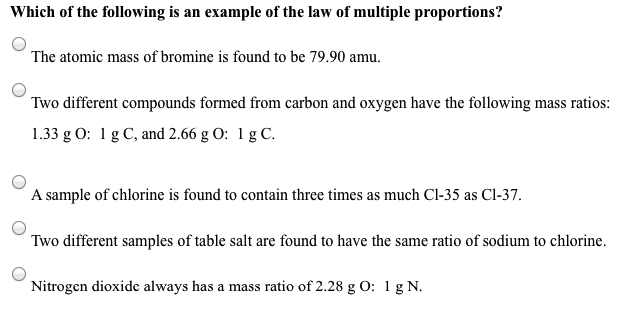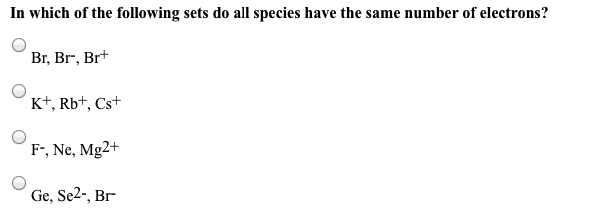CHEM 6A Lecture Notes - Lecture 6: Chemical Formula

Law of Multiple Proportions
● If elements A and B react to form two compounds, the different masses of B that
combine with a fixed mass A can be expressed as a ratio of small whole numbers
● For the same mass of O
○ Mass of N in A = 1.750g = 2
Mass of N in B 0.8750g 1
Mass of N in B = 0.8750g = 2
Mass of N in C 0.4375g 1
Mass of N in A = 4
Mass of N in C 1
● If we know that compound A is N2O, what are the chemical formulas of compounds B
and C?
○ A B C
N2O NO N1/2O NO2
● Chemical formula - shows the elements present in a compound and their relative
proportions, either as the simplest whole number ratio or showing the actual number of
atoms in a basic structural unit
○ Proportions are fixed due to law of multiple proportions
● Suppose there is a fourth compound D, where 0.5836g of N combines with 1.000g of O.
Compare compound C with compound D and suggest a possible chemical formula for D.
(Recall compound C has 0.4375g of N per 1.000g of 0)
○ Mass of N in D = 0.5836g = 1.334 =~(about) 4/3
Mass of N in C 0.4375g 1 1
○ C D
NO2 N4/3O2 N4O2 → N2O3
● Consider three compounds containing sulfur and oxygen only.
*Compound A is found to contain 15.90g of O and 9.10g of S
*18.00g of compound B is found to contain 10.79g of O
*When 25.61g of S is allowed to react with O in air under conditions to make compound
C, 32.00g of compound C is formed (assume all S is used up)
Show how these data illustrate the law of multiple proportions. Use S as the element “fixed
mass”
Cpd
Mass of O
Mass of S
A
15.90g
9.10g
find more resources at oneclass.com
find more resources at oneclass.com


19
CHEM 6A Full Course Notes
Verified Note
19 documents
Document Summary
If elements a and b react to form two compounds, the different masses of b that combine with a fixed mass a can be expressed as a ratio of small whole numbers. Mass of n in a = 1. 750g = 2. Mass of n in b = 0. 8750g = 2. Chemical formula - shows the elements present in a compound and their relative proportions, either as the simplest whole number ratio or showing the actual number of atoms in a basic structural unit. Proportions are fixed due to law of multiple proportions. Suppose there is a fourth compound d, where 0. 5836g of n combines with 1. 000g of o. Compare compound c with compound d and suggest a possible chemical formula for d. (recall compound c has 0. 4375g of n per 1. 000g of 0) Mass of n in d = 0. 5836g = 1. 334 =~(about) 4/3. Consider three compounds containing sulfur and oxygen only.



